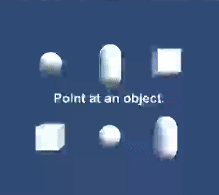Week 2, Part 2: 23 Feb. - 2 Mar. [AR Prototype]
I began looking at the available AR platforms to identify
the most appropriate. The most promising options were ‘ARKit’, ‘ARCore’, ‘Vuforia’
and ‘8th Wall’.
‘ARKit’ is only for iOS; ‘ARCore’ is only for Android.
Both these options exclude too many potential users.
‘8th wall’ and ‘Vuforia’ are both cross platform and offer
thorough documentation, however ‘8th wall’ doesn’t offer image tracking where ‘Vuforia’
does. ‘Vuforia’ is also officially integrated into unity 2017 and higher, making it my
best option.
Using Vuforia within Unity is an intuitive experience.
Vuforia allows users to upload images, creating a database reference image which can then be imported into Unity. After activating a Vuforia license key, any
Unity function can be triggered when the device camera detects an image
identical to the one used for the database image.
The first issue I found was that the model failed to
load. After troubleshooting the problem and reading the Vuforia documentation,
I found that the app works by detecting ‘features’ within
images. It ignores colour and creates reference points by identifying
intersecting areas of high contrast (non-repeating, high variance of features
is preferable). Vuforia rate each reference image out of 5 to indicate how
easily recognisable the reference points in the database image are. My picture
was rated at 2 stars.
After sourcing a more suitable 5/5 image (due to a far greater number of features) and repeating the process, the model was instantiated without issue.
I will need to ensure future database images chosen take these criteria into account and are of 5 star rating in order to reliably trigger functionality.
After reviewing my reference
image’s features, it was clear that the similar ‘orange’ tones throughout the
image did not provide enough areas of contrast – nor did the airship body
provide sufficient angular diversity for Vuforia to recognise. Both of these
yielded a very low number of image features.
After sourcing a more suitable 5/5 image (due to a far greater number of features) and repeating the process, the model was instantiated without issue.
I will need to ensure future database images chosen take these criteria into account and are of 5 star rating in order to reliably trigger functionality.
Another issue was the model ‘shaking’ once
instantiated. After further reading into the Vuforia documentation and browsing
the forums, I found the model instability is caused by a combination of
factors: flatness of image (creases hinder detection), finish of image (glossy
images hinder detection), lighting of area (dark environment hinders detection),
size of image (the smaller the image, the harder to detect) and camera mode (“CONTINUOUS_AUTO”
smooths the 3D model).
Using a database image with these
improved attributes greatly reduce the issue, though to completely solve the
problem a script which updates the transform and rotation of the scene camera
to that of a child object whose position and rotation is an average of the most recent
position between the viewing camera and position of the instantiated model should be implemented.
After solving my problems, I created a script to rotate the airship using an onscreen joystick, giving the user some very basic interaction. I then began testing detection of database images at different angles, as this will likely be required at the museum exhibition. This meant the axis about which the ship rotated had to be considered.
I then adapted the app to have the joystick become visible only when the database image is detected. Once this was implemented, I used the same approach to trigger information about the loaded model as it is instantiated. This approach can be used to start any visual effect or UI.
We then forwarded Basil a link to the below YouTube video which shows a
prototype of the implementation, as without a reference the concept may have
been misunderstood.
 |
| Video sent to Basil |
The next stage will be to explore detection of 3D models
to trigger further visuals as well as object permanence (3D model will not be
destroyed when device loses database image).





Comments
Post a Comment